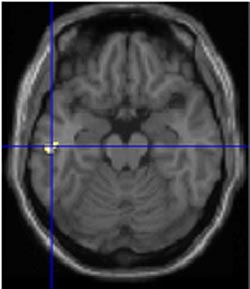

A group of CAS bio-physicists have revealed that the brain's left hemisphere gets upper hand in global topological perception while the right hemisphere is superior in cognition of local geometric properties.
As reported in the 26 December 2007 issue of the
Proceedings of the National Academy of Sciences (PNAS), the discovery was made by a research team headed by Prof. CHEN Lin, an experimental psychologist with the State Key Laboratory for Brain & Cognitive Science attached to the CAS Institute of Biophysics.
The research team develops a "global precedence" topological hypothesis, emphasizing that the cognitive process starts from the properties derived from the global topological invariant and offering a brand-new approach for exploring the differences between the brain's right and left hemispheres.
By applying the "global first" approach, WANG Bo and colleagues conducted a series of experiments with right-handers, including functional MRI studies. The results show that the left hemisphere of the brain is more involved than the right hemisphere in perceiving the topological properties of an object, that is, the prosperities of a geometric object that remains unchanged by deformations such as bending, stretching, or squeezing but not breaking. They also asked right-handed individuals to examine a range of topological structures, including inside/outside relationships, holes presented in differing shapes such as triangles, circles, and squares, and compare them to other geometric properties.
Experts believe that the research provides a unified framework for terminating a variety of heated controversies among neurologists worldwide on the relations between the brain's two hemispheres in explaining the visual perception. At the same time, the new finding might serve as a fundamental groundwork for demystifying the secrets in human brain and further exploiting its potential.






